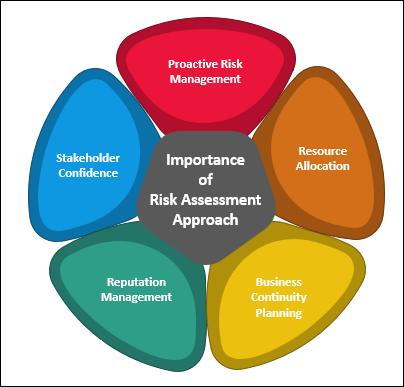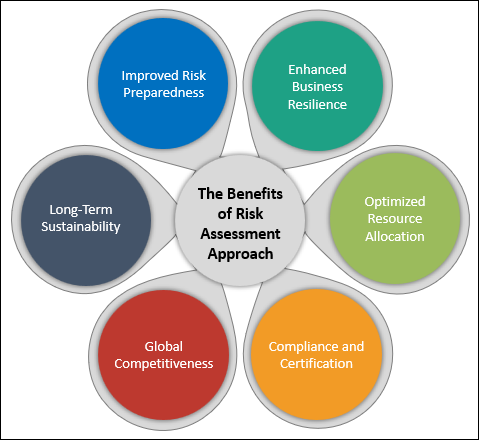Risk Assessment Approach for ISO 22301 BCMS
ISO 22301, the international standard for Business Continuity Management Systems (BCMS), provides organizations with a robust framework to enhance their resilience in the face of unexpected disruptions. Central to ISO 22301's effectiveness is its risk assessment approach, a pivotal component of BCMS implementation.
In an increasingly unpredictable business environment, identifying and mitigating risks is essential for an organization's survival and success. ISO 22301 not only guides businesses in establishing a BCMS but also prescribes a structured method for risk assessment. This approach aids in comprehensively understanding the threats, vulnerabilities, and critical processes that could be impacted by disruptive incidents.
ISO 22301's risk assessment process helps organizations systematically evaluate the likelihood and impact of various risks, enabling them to prioritize and allocate resources for the most critical aspects of their business continuity planning. This proactive approach minimizes the potential for downtime, financial losses, and reputational damage.
Importance for ISO 22301:Risk Assessment Approach for ISO 22301 BCMS
- Proactive Risk Management: ISO 22301's risk assessment approach promotes proactive risk management. By identifying potential threats and vulnerabilities, organizations can take preventive measures, reducing the likelihood and impact of disruptions.
- Resource Allocation: It helps organizations allocate resources effectively. By prioritizing critical processes and vulnerabilities, businesses can allocate resources where they are most needed, optimizing cost-effectiveness.
- Comprehensive Understanding: This approach provides a comprehensive understanding of the organization's risk landscape. It enables a structured assessment of both internal and external risks, including natural disasters, cybersecurity threats, supply chain disruptions, and more.
- Business Continuity Planning: Effective risk assessment is a cornerstone of successful business continuity planning. It informs the development of strategies and tactics to ensure business operations can continue during and after adverse events.
- Compliance and Certification: ISO 22301 certification is a recognized mark of excellence in BCMS. Proper risk assessment is a critical requirement for compliance, making it easier for organizations to achieve and maintain certification.
- Reputation Management: Timely identification and mitigation of risks help protect an organization's reputation. The ability to respond effectively to disruptions enhances customer and stakeholder trust.
- Legal and Regulatory Compliance: In many industries, compliance with legal and regulatory requirements is mandatory. ISO 22301's risk assessment approach aids in ensuring compliance with these standards.
- Insurance Premium Reduction: Some insurance providers offer reduced premiums for organizations that have a robust BCMS in place, including effective risk assessment. This can lead to cost savings.
- Continuous Improvement: The risk assessment approach is not a one-time activity but an ongoing process. It promotes a culture of continuous improvement, allowing organizations to adapt to evolving threats and vulnerabilities.
- Global Competitiveness: In a global marketplace, organizations that demonstrate a commitment to risk management and business continuity through ISO 22301 are more competitive and attractive to partners and clients.
- Stakeholder Confidence: Stakeholders, including shareholders, customers, and employees, have more confidence in organizations that are prepared for unexpected disruptions. ISO 22301's risk assessment approach bolsters this confidence.
- Cost Savings in the Long Run: While implementing a robust risk assessment process requires an initial investment, it often results in significant cost savings by preventing and mitigating disruptions.
Key Elements for ISO 22301:Risk Assessment Approach for ISO 22301 BCMS
Risk Identification:
- This is the initial step in the risk assessment process, involving the identification of potential threats and vulnerabilities that could disrupt business operations.
- It includes internal and external risks, such as natural disasters, supply chain interruptions, cybersecurity threats, and regulatory changes.
Risk Analysis:
- After identifying risks, a thorough analysis is conducted to understand the likelihood and potential impact of each risk on the organization.
- Qualitative and quantitative assessments are often used to gauge the severity of risks.
Business Impact Analysis (BIA):
- BIA is a critical component of risk assessment. It evaluates the criticality of various business processes and their dependencies.
- BIA helps determine recovery time objectives (RTO) and recovery point objectives (RPO) for different processes.
Risk Evaluation:
- In this phase, the assessed risks are prioritized based on their severity and potential impact on the organization's operations.
- The organization identifies which risks require immediate attention and resources.
Risk Treatment:
- Once risks are prioritized, organizations develop and implement risk treatment plans. This may involve risk mitigation, risk avoidance, risk transfer, or risk acceptance strategies.
- Specific measures and controls are put in place to reduce the impact and likelihood of risks.
Monitoring and Review:
- Risk assessment is an ongoing process. Organizations continuously monitor and review the effectiveness of risk treatment measures.
- This ensures that risk assessments remain up-to-date and relevant in the face of evolving threats.
Documentation and Reporting:
- Comprehensive documentation is essential. All risk assessment activities, findings, and mitigation plans are documented for future reference and audit purposes.
- Regular reporting on risk assessments is often required for compliance and certification purposes.
Integration with BCMS:
- The risk assessment approach should be seamlessly integrated with the organization's overall BCMS. Risk assessments inform the development of business continuity strategies and plans.
Communication and Training:
- Effective communication of risks and risk treatment plans to relevant stakeholders is crucial. It ensures everyone is aware of their roles in mitigating risks.
- Training and awareness programs are often necessary to build a risk-aware culture within the organization.
Legal and Regulatory Compliance:
- Consideration of legal and regulatory requirements is vital. Organizations must ensure that their risk assessment approach aligns with industry-specific regulations and standards.
Scenario Testing and Exercises:
- Periodic testing and exercises using different risk scenarios help validate the effectiveness of the risk assessment and mitigation strategies.
- This element is essential for refining the BCMS and enhancing preparedness.
Continuous Improvement:
- The risk assessment approach should be dynamic and open to continuous improvement. Feedback and lessons learned from incidents or exercises should be used to refine risk assessments.
The Benefits for ISO 22301 : Risk Assessment Approach for ISO 22301 BCMS
- Improved Risk Preparedness:The risk assessment approach helps organizations to proactively identify potential threats and vulnerabilities, allowing for better preparedness and response to disruptions.
- Enhanced Business Resilience:By identifying critical processes and developing risk mitigation strategies, ISO 22301's risk assessment approach enhances an organization's resilience, ensuring the continuity of essential operations during adverse events.
- Cost Reduction:Effective risk assessment can lead to cost savings by preventing or minimizing the impact of disruptions. It allows for efficient allocation of resources and reduces downtime-related expenses.
- Optimized Resource Allocation:Organizations can allocate resources more effectively by focusing on the most critical risks and business processes. This maximizes the return on investment in risk management.
- Reputation Protection:Timely identification and mitigation of risks help protect an organization's reputation by demonstrating a commitment to business continuity and preparedness.
- Compliance and Certification:ISO 22301 certification is highly regarded in many industries. Implementing the risk assessment approach ensures compliance with BCMS standards, facilitating certification and regulatory compliance.
- Improved Decision-Making:Informed by the risk assessment, organizations can make data-driven decisions that prioritize risk management efforts and enhance overall business strategy.
- Better Insurance Terms:Some insurance providers offer favorable terms and reduced premiums to organizations with robust BCMS in place, including a comprehensive risk assessment.
- Stakeholder Confidence:Stakeholders, including customers, shareholders, and partners, gain confidence in organizations that have a robust risk assessment process in place, knowing that their interests are protected.
- Legal and Regulatory Adherence:The risk assessment approach ensures that organizations remain in compliance with legal and regulatory requirements, reducing the risk of legal and financial penalties.
- Global Competitiveness:In a global marketplace, organizations that demonstrate a commitment to risk management and business continuity through ISO 22301 are more competitive and attractive to partners and clients.
- Long-Term Sustainability:An effective risk assessment approach contributes to an organization's long-term sustainability by safeguarding against threats that could otherwise disrupt operations or cause irreparable damage.
- Strategic Advantage:Leveraging the risk assessment approach can provide a strategic advantage by identifying opportunities for improvement and innovation within the organization.
- Customer Trust and Loyalty:Effective risk management and continuity planning foster customer trust and loyalty. Customers are more likely to remain loyal to organizations they trust to weather disruptions.
- Continuous Improvement:The risk assessment approach promotes a culture of continuous improvement, enabling organizations to adapt to evolving risks and vulnerabilities.
Conclusion
In conclusion, ISO 22301's risk assessment approach serves as a fundamental pillar in fortifying an organization's resilience against unexpected disruptions. By systematically identifying, analyzing, and prioritizing risks, this approach empowers businesses to make informed decisions, allocate resources efficiently, and protect their critical processes. The benefits are far-reaching, from cost reduction and improved preparedness to regulatory compliance and enhanced stakeholder confidence. Moreover, the continuous improvement ethos it instills ensures adaptability in the face of evolving risks.
Embracing ISO 22301's risk assessment approach is not merely a strategic choice; it is an imperative for organizations operating in today's dynamic and unpredictable business landscape. By doing so, they not only mitigate the impact of disruptions but also position themselves for sustained success in an increasingly competitive and challenging global market.



